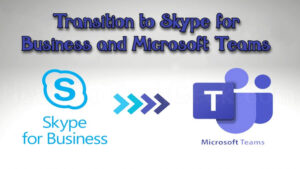In the world of unified communications, Lync Conf (short for Lync Conference) stands out as a key feature for businesses and professionals looking to streamline their collaboration efforts.
Microsoft Lync, which has now evolved into Microsoft Skype for Business and Microsoft Teams, originally provided Lync Conf to host virtual meetings, webinars, and group calls.
This article explores everything you need to know about Lync Conf, including its features, benefits, and how it helps businesses achieve more efficient communication.
What is Lync Conf?
Lync Conf refers to the conference calling and virtual meeting functionality within Microsoft’s unified communications platform, formerly Microsoft Lync.
Designed for enterprises, Lync allows users to make voice and video calls, instant messages, share files, and conduct online meetings with colleagues and clients.
This seamless integration of communication tools into one platform made it a powerful solution for modern business collaboration.
As the platform transitioned into Skype for Business and eventually into Microsoft Teams, the core Lync Conf functionalities continued to be vital for enabling group communication, conferencing, and collaboration, especially in today’s remote-working landscape.
Features of Lync Conf

1. Voice and Video Conferencing
One of the most important features of Lync Conf is its ability to host both voice and video conferences. Participants can join meetings from anywhere, making it ideal for global teams. High-quality video and audio ensure smooth, uninterrupted communication.
2. Screen Sharing and Presentation Tools
During a Lync Conference, users can share their screens in real time, allowing for more interactive presentations. Whether it’s a product demo, a sales presentation, or a team briefing, the screen-sharing feature enhances the effectiveness of virtual meetings.
3. Instant Messaging and File Sharing
In addition to video and voice, Lync Conf allowed for simultaneous instant messaging (IM) and file sharing.
This ensured that participants could share important documents or notes without interrupting the flow of the conversation.
4. Meeting Scheduling and Calendar Integration
Lync Conf integrated seamlessly with Microsoft Outlook, allowing users to schedule and join meetings with just a few clicks.
This calendar integration also allowed for automatic reminders and easy access to meeting links, making it a convenient tool for busy professionals.
5. Unified Collaboration Across Devices
With Lync Conf, users could participate in meetings from a wide range of devices, including desktops, laptops, tablets, and smartphones.
This cross-device functionality allowed participants to join conferences whether they were at the office, at home, or on the go.
Benefits of Using Lync Conf
1. Enhanced Collaboration
Lync Conf provided a unified collaboration solution, combining instant messaging, file sharing, voice, and video in one platform. This allowed teams to work together more efficiently, regardless of their physical location.
In modern businesses, where remote work is becoming the norm, the ability to collaborate effectively from anywhere is crucial.
2. Improved Productivity
With features like calendar integration, quick meeting setup, and the ability to host multiple participants, Lync Conf helped businesses increase productivity.
The platform streamlined communication processes, reducing the need for long email threads or back-and-forth phone calls. Teams could now get answers, feedback, and decisions in real time.
3. Cost Efficiency
By reducing the need for in-person meetings and travel, Lync Conf contributed to cost savings. Virtual conferences enabled businesses to communicate with clients, partners, and employees without the logistical and financial overheads of travel.
Additionally, the platform’s integration with existing Microsoft products meant fewer expenses on third-party communication tools.
4. Scalability for Businesses of All Sizes
Whether you’re a small business or a large corporation, Lync Conf offers scalable solutions. Businesses could host small team meetings or large webinars with hundreds of participants.
This flexibility made it appealing to organizations of all sizes.
5. Security and Reliability
Security is a top priority in business communications, and Lync Conf offers enterprise-grade encryption and security features to protect sensitive data.
Integration with Microsoft’s secure infrastructure ensured that calls, messages, and shared files were protected from unauthorized access.
Transition to Skype for Business and Microsoft Teams

Microsoft replaced Lync Conf with Skype for Business in 2015. Eventually, Skype for Business was replaced by Microsoft Teams in 2017.
Microsoft Teams kept all the core Lync Conf features but added new functionalities for modern workplaces.
Transition from Lync Conf to Microsoft Teams
While Lync Conf was a powerful tool in its time, Microsoft made the strategic decision to transition Lync into Skype for Business in 2015, and later into Microsoft Teams in 2017.
These newer platforms retained the core features of Lync Conf while adding more advanced collaboration tools and integration capabilities.
Microsoft Teams as the Successor of Lync Conf
Today, Microsoft Teams serves as the direct successor to Lync Conf. With Teams, users can still host voice and video conferences, share screens, collaborate on files in real time, and chat via instant messaging.
However, Teams goes beyond what Lync Conf offers by integrating with a wider array of Microsoft 365 apps, providing persistent chat rooms, and enhancing team-based collaboration.
Teams also allow for breakout rooms, task assignments, and extensive third-party app integrations, making it the go-to platform for comprehensive workplace collaboration.
Additionally, Teams offers larger participant capacities for virtual meetings and webinars, making it ideal for organizations of all sizes.
Why Microsoft Teams is the Future
1. More Features
Microsoft Teams is built for today’s business needs. It offers persistent chat, task management, and integrated Microsoft 365 tools.
2. Better Collaboration Tools
Teams allow real-time file collaboration, breakout rooms, and deep integrations with third-party apps. This makes it more powerful than Lync Conf.
3. Large-Scale Meetings
Microsoft Teams can host large webinars and meetings with more participants than Lync Conf ever could. It’s ideal for companies that need a scalable solution for global communication.
4. Future-Proof Your Business
With Microsoft phasing out Skype for Business, now is the time to upgrade to Teams. Teams offer regular updates, better features, and ongoing support from Microsoft.
How to Optimize Your Lync Conf (or Microsoft Teams) Usage
If your business is still utilizing Lync Conf or even Microsoft Teams, optimizing its use can help you maximize productivity. Here are some tips:
1. Regularly Schedule Meetings
Use the calendar integration to ensure that meetings are scheduled regularly and participants receive reminders. This helps improve attendance and ensures that meetings are productive.
2. Leverage Screen Sharing and File Collaboration
Use the screen-sharing feature to make your presentations more interactive and engaging. Collaboration on files in real-time can help streamline decision-making and feedback processes.
3. Use Instant Messaging for Quick Clarifications
Instead of relying solely on voice and video, use instant messaging within Lync Conf (or Teams) to clarify points quickly without interrupting the meeting flow.
4. Record Meetings for Future Reference
Many businesses find it helpful to record important meetings. This ensures that any decisions made are well-documented, and absent participants can review the discussion.
Conclusion
Lync Conf may have started as a simple virtual meeting tool, but it evolved into the core of today’s Microsoft Teams. With modern features, scalability, and robust security, Microsoft Teams is the ultimate solution for businesses looking to streamline communication and collaboration.
If you haven’t made the switch from Lync Conf to Teams, now is the time to consider it. You’ll unlock new tools, enhance your team’s productivity, and ensure that your business stays ahead in the digital age.




